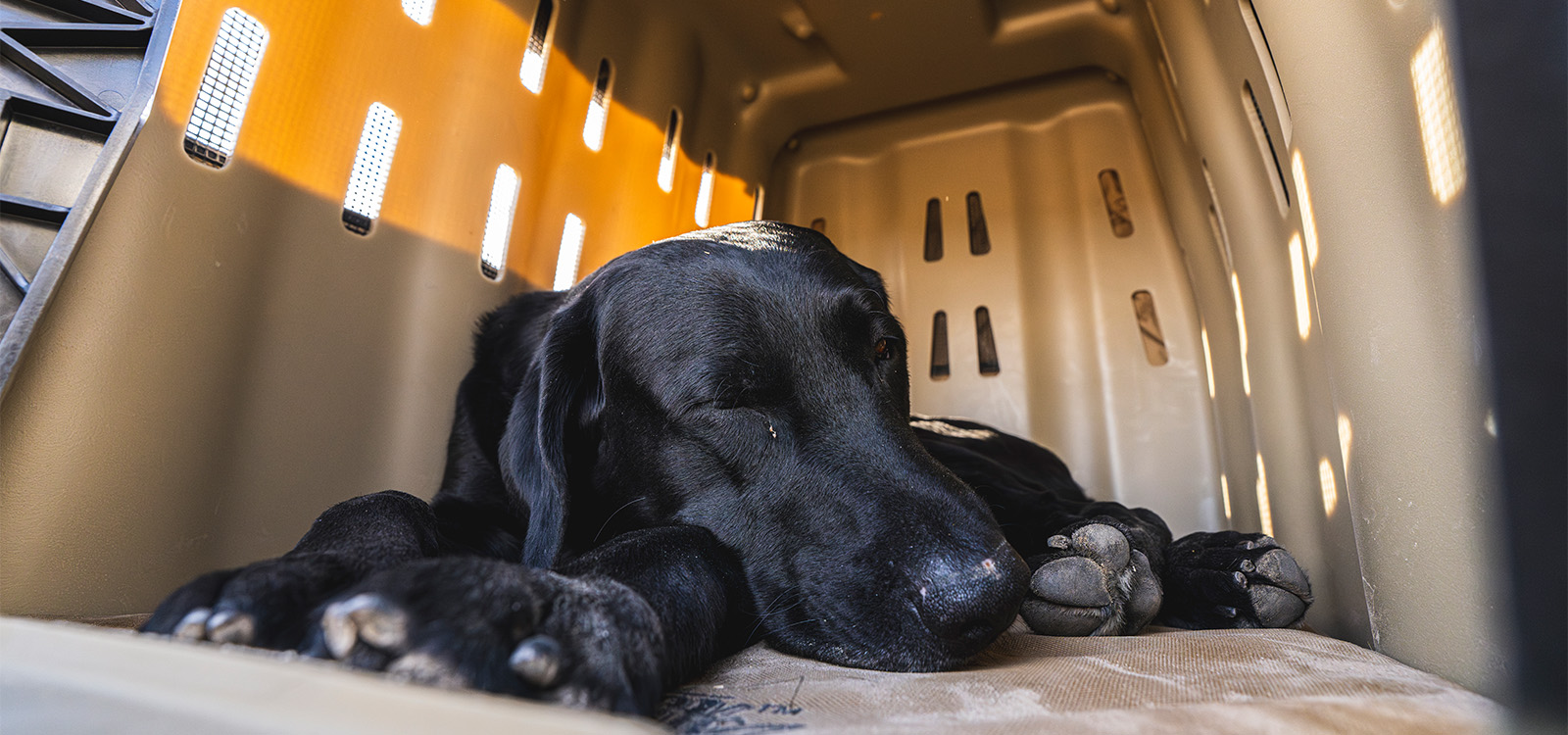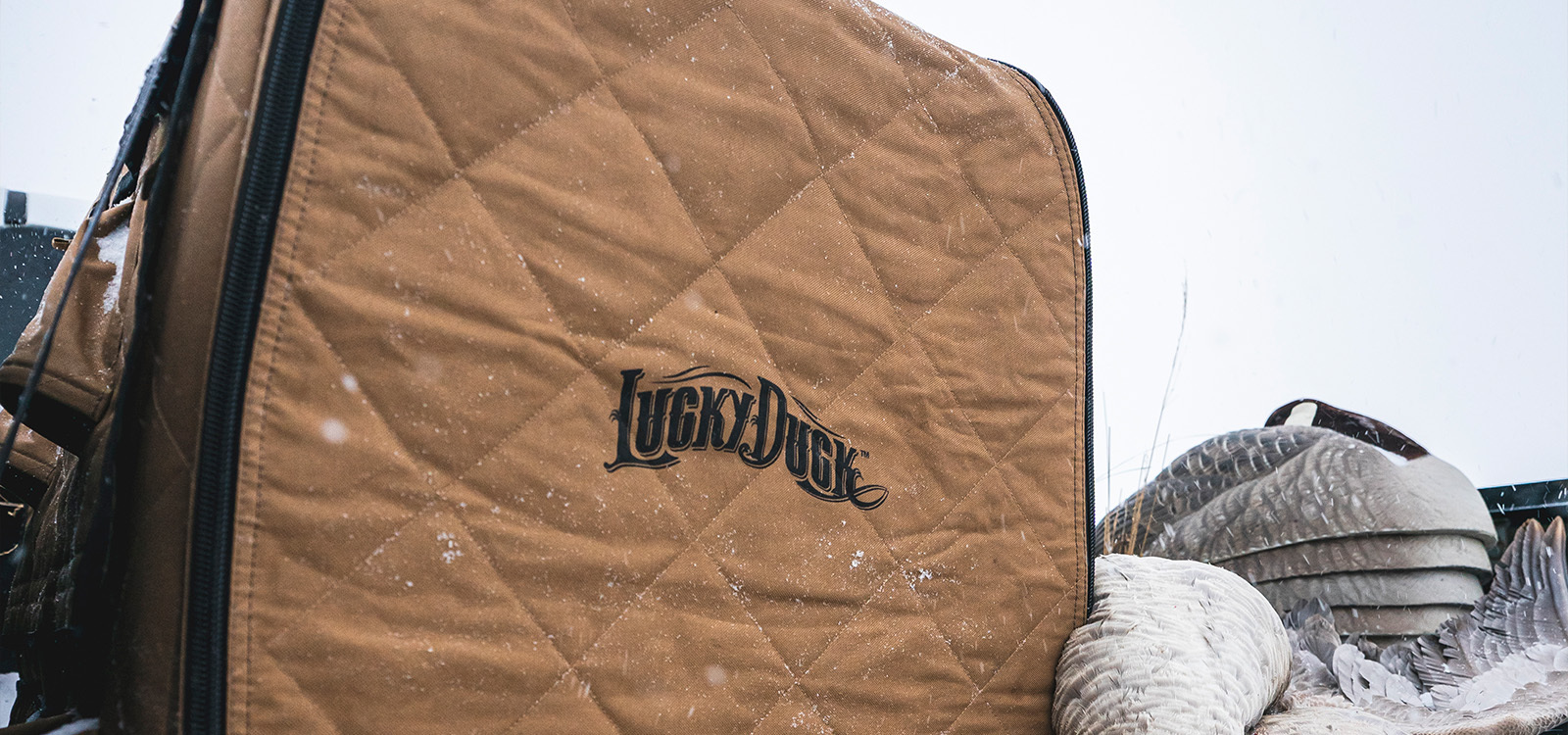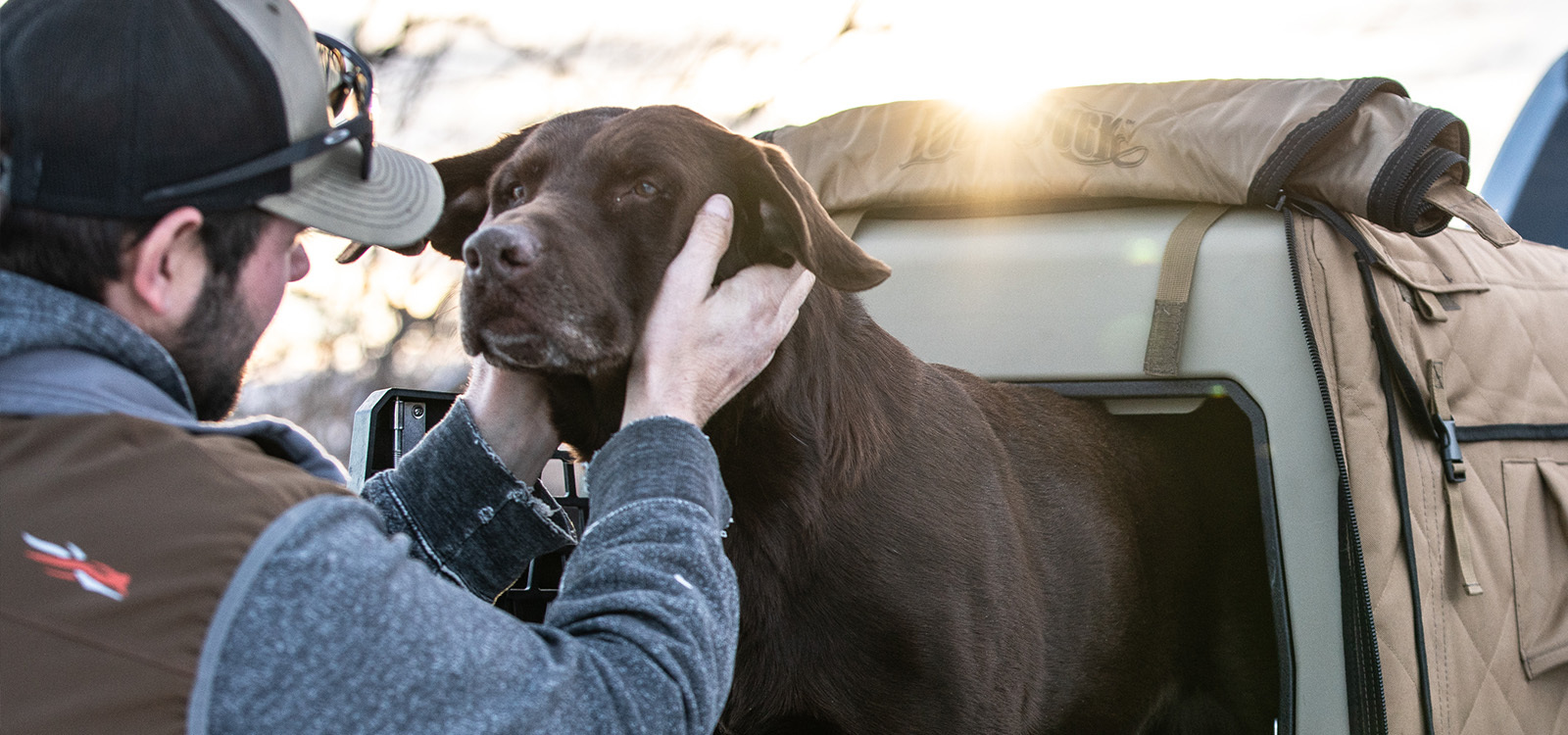Tips for Traveling with Your Hunting Dog
Posted by Lucky Duck Team on May 16th 2025
Introduction
Hitting the road with your hunting dog is one of the most rewarding parts of the hunting experience. Whether you’re chasing upland birds, waterfowl, or big game, having a well-prepared canine partner by your side can make all the difference. But successful travel with your dog(s) requires planning, preparation, and a keen eye on your dog’s needs before, during, and after the trip. This guide will walk you through the essential tips to ensure both you and your dog have a safe, comfortable, and productive journey.
Pre-Trip Preparation: Health, Paperwork, and Conditioning
Before you ever load up the truck, start by making sure your dog is physically and legally ready for the trip:
- Health check: Schedule a vet visit to ensure your dog is up to date on vaccinations, parasite prevention (fleas, ticks, heartworm), and overall wellness. This is especially important when traveling across state lines or into Canada, which requires a health certificate.
- Paperwork: Check destination-specific requirements. Some states require Certificates of Veterinary Inspection (CVIs), and international trips may call for additional vaccinations or documents. Give yourself at least 4–6 weeks to complete paperwork to avoid last-minute stress.
- Conditioning: Keep your dog active and mentally sharp in the off-season with regular training sessions. A well-conditioned dog will have the endurance to handle long hunts, stay focused, and avoid injury.
Packing Essentials: Gear, Kennels, and First Aid
Having the right gear on hand makes all the difference when traveling with your dog:
- Kennels and tie-outs: A sturdy, secure kennel (such as a Lucky Duck Kennel) is a great tool for travel safety. For camp or roadside stops, a stakeout line lets you secure dogs efficiently while still allowing them some freedom.
- Food and water supplies: Bring enough of your dog’s usual food for the entire trip and plenty of fresh water from home. Include food bowls, water jugs, and portable water dishes.
- First aid kit: Accidents can happen. Besides your own first aid kit, pack a dedicated canine first aid kit with essentials like:
- Saline solution
- Hydrogen peroxide
- Bandages
- Antibiotic ointment
- Tweezers
- Any vet-recommended medications (including Benadryl for allergic reactions).
- Additional gear: Don’t forget collars with ID tags, leashes, training tools (e-collars, leads, whistles), a dog vest for cold or rough conditions, extra towels, and waste bags for cleanup.
Water and Food Management on the Road
Keeping your dog hydrated and well-fed on the road is critical to maintaining their health and performance. Always bring plenty of fresh water from home, especially when traveling long distances, to prevent digestive upset caused by unfamiliar water sources. If your trip lasts too long to take all your own water, gradually mix in local water to help your dog adjust.
For feeding, stick to your dog’s usual food to avoid stomach issues, but be prepared to increase calories if your dog will be hunting hard. Remember to pack portable bowls, dry food storage, and extra treats for energy boosts.
Keeping Dogs Safe and Comfortable in Transit
Your dog’s safety on the road starts with a secure travel setup. Use a high-quality, crash-tested kennel or crate placed in a well-ventilated area of your vehicle. For multiple dogs, a dog trailer or truck bed setup with a topper can work well, but make sure the area is shaded, secure, and temperature-controlled.
Check kennel ventilation, especially when driving in warm weather. Add an insulated pad or crate liner for comfort, and in cold weather, use an insulated kennel cover or straw bedding to keep your dog warm. On longer trips, plan to stop every 3–4 hours to allow dogs to stretch, relieve themselves, and drink water. Never leave dogs unattended in a vehicle during extreme temperatures.
Managing Behavior and Stress During Travel
Even seasoned hunting dogs can get anxious or overstimulated on the road. Maintain consistent routines from home to help ease stress — for example, enforce crate manners, require calm behavior when entering or exiting the vehicle, and continue using familiar commands like “sit,” “stay,” and “heel.”
During rest stops, give your dog a safe, defined space to relax. If your dog struggles with travel anxiety, talk to your vet about calming supplements or techniques. Before turning your dog loose in the field, do a short warm-up walk or heel session to help settle their mind and focus their energy on the hunt.
Hydration and Nutrition in the Field
Once you’re in the field, your dog’s energy needs will skyrocket. Cold weather, rough terrain, and long retrieves all burn calories — so be ready to adjust their diet. Work with your vet to choose a high-performance formula that supports endurance and recovery.
Offer water frequently throughout the hunt, especially on warm days. Collapsible bowls are handy tools for field hydration. Watch for signs of dehydration (dry gums, lethargy, excessive panting) and give dogs frequent rest breaks in shaded areas. After the hunt, inspect your dog for injuries, replenish their water, and provide a hearty meal to support recovery and get them ready for the next day.
Monitoring Health and Safety on the Hunt
While in the field, it’s crucial to keep a close eye on your dog’s physical condition and behavior. Hunting dogs are naturally driven and may push themselves past safe limits, so it’s up to you to monitor them. Watch for signs of fatigue, dehydration, overheating, limping, or cuts — especially on feet, legs, and ears. Check their footpads regularly for abrasions, burrs, or ice buildup, depending on the terrain.
Be aware of environmental hazards such as barbed wire, sharp rocks, or extreme weather conditions, and adjust your hunt accordingly. Ensure your dog wears proper identification (collar tags and a microchip) and consider using GPS collars for young or wide-ranging dogs. If your dog shows signs of distress, stop the hunt, provide water and shade, and, if needed, consult a veterinarian promptly.
Post-Hunt Care and Recovery
When the hunt is over, your job isn’t done. A thorough post-hunt checkup is essential to keep your dog healthy and ready for future days in the field. Start with a head-to-tail exam, looking for redness in the eyes, cuts on the ears, burrs or debris in the coat, sore feet, or tender joints.
Give your dog a chance to cool down and rehydrate before feeding, then offer a nutritious, high-calorie meal to replenish their energy. If your dog worked hard in cold water or snowy conditions, dry them thoroughly to prevent hypothermia and watch for signs of “cold tail” or joint stiffness. Use this time to treat minor wounds, apply any needed ointments, and let your dog rest in a comfortable, warm space.
Setting Up for Success on Every Trip
By planning ahead, packing the right gear, and paying close attention to your dog’s health, hydration, and comfort, you’ll set both of you up for a safe, rewarding, and memorable hunting experience.
Remember: preparation and consistency are key. A well-conditioned, well-cared-for dog not only performs better in the field but also builds the trust and partnership that makes every hunt special. Whether you’re chasing ducks in the marsh or birds on the prairie, these travel tips will help ensure you and your four-legged partner get the most out of every adventure.
Ready to gear up for your next trip? Check out Lucky Duck’s lineup of premium kennels, blinds, and more designed to keep you — and your dog — at the top of your game!





